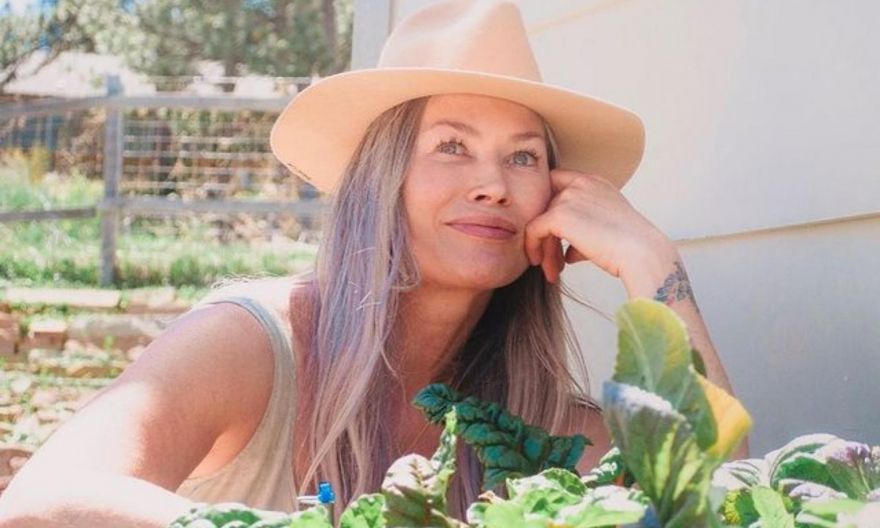Why an ex-supermodel who says she was raped at 17 is suing now

NEW YORK (NYTIMES) – In the early 1980s, long before she would become one of the most recognisable models in the world, Carre Otis was living miserably in Northern California.
Her parents had split up and her family was deeply unhappy; she was dyslexic and struggling in school. At 16, she ran away and lived on the streets. “It was my only hope,” she told me recently, from her home in Colorado, where she has settled into a quiet life with her husband and children, “that I could make it in modelling.”
In San Francisco, she was discovered by a modelling scout and eventually landed in New York, which she found cold and disorienting. In the boundaryless world of the late 20th century fashion industry, where go-sees often took place in photographers’ apartments, humiliations mounted one on top of the other.
She lived in what was more or less a warehouse – vulnerable, unprotected – with other young, aspiring models. Some girls had mothers with them who kept them safe. Otis was alone, “in a unique situation, a wayward child primed for what I endured”.
What she endured, she has said since the publication of her memoir, Beauty Disrupted, a decade ago, was serial rape. She reiterated that claim in a lawsuit filed in federal court in Manhattan on Thursday (Aug 12). In the suit, Otis, who now goes by her married name, Carre Sutton, states that in 1986, when she was 17, she was sexually assaulted regularly by Mr Gerald Marie, Elite Model Management’s former European chief. Also named in the suit is her booking agent at the time, Ms Trudi Tapscott, who would later work at Vogue before founding her own agency, the Model Coaches, in New York in 2018.
In the wake of the #MeToo movement, Mr Marie has come under criminal investigation in France for allegations of sexual assault dating back to the 1980s and 1990s – allegations he has denied “categorically”. As at February, 11 women who have accused him of sexual misconduct and rape had been asked to meet with investigators in Paris. Sutton is scheduled to talk to them next month.
In the meantime, she has availed herself of another mode of recourse, New York state’s Child Victims Act, which allows survivors of childhood sexual abuse to pursue civil claims against those who they say harmed them, no matter how long ago.
Since the law was enacted in 2019, thousands of such claims have been filed, many of them against the Archdiocese of New York, and a substantial number, like Sutton’s and Ms Virginia Giuffre’s against Prince Andrew, were brought this week, just before the window provided by the statute was set to close.
It is Ms Tapscott, the complaint maintains, whose negligence enabled the abuse, by sending Sutton from New York to Paris under the tutelage of Mr Marie. According to the suit, the two Elite executives arranged for the teenager to live in his apartment, with Ms Tapscott failing to let Sutton know that “the modelling agency was sending her to live in the home of a sex offender”.
By the mid-1980s, Mr Marie’s treatment of young models was allegedly known. Before Mr Marie joined the agency in 1985, Elite’s founder John Casablancas was wary of an association with him, the suit claims, quoting a former business partner of his who said Mr Casablancas had called Marie “a sleaze” who “beats up girls” and “rapes them”. The pattern of assault began, the complaint states, when Mr Marie’s girlfriend, the model Linda Evangelista (whom he would later marry and then divorce), was out of town.
In the apartment, on Rue du Bac, Sutton was put in his daughter’s vacant room. “It became clearer and clearer to me that if I did push back, I would not work,” Sutton told me. When she did push back, she said, she did lose work.
Not long after this period of emotional and professional descent, she returned to California and moved to a farm, where she lived with midwives and herbalists. She eventually found fame on her own terms, working with superstar photographers like Herb Ritts and Richard Avedon and modeling for Calvin Klein. But intimacy with men was impossible for years, she told me; abusive romantic relationships followed, and she had also grown to roundly mistrust women.
If Sutton was betrayed by Ms Tapscott in the way the suit lays out, by being directed toward a predator, how should the law respond?
“Any time you are working with children, there is a heightened responsibility to keep them safe,” said Ms Carrie Goldberg, a Brooklyn lawyer who has represented many adult victims of child sex abuse. The problem for young models, particularly during the 1980s and 1990s, was that “they weren’t seen as children, but legally they are, and they were”.
Sutton’s lawyers will first have to prove – in the absence of text chains and e-mails, which did not exist 35 years ago – that Ms Tapscott knew about Mr Marie’s proclivities and endangered her anyway. In response to an investigation into Mr Marie’s conduct and the various accusations against him, published last fall by The Guardian, Ms Tapscott did not claim obliviousness but said instead: “We didn’t have the language then to know that this was wrong, and even if we did, who would we report it to? We were like a family and there was no human resources department.”
She went on to say that she had “tremendous regret about not doing more at the time”. In regard to Sutton’s suit, Ms Tapscott declined to comment.
I asked Sutton what she hoped to gain by bringing her case at this moment, just as the deadline was closing. She said she was motivated in large part by her anger over Bill Cosby’s release from prison, and by watching her two daughters enter adolescence only to see clearly how young and unformed girls of that age really are. “They are children,” she told me. A lawsuit like this also comes with the potential to encourage other victims to come forward.
Exactly a year ago, Sutton, along with 12 other people, addressed a letter to Governor Andrew Cuomo of New York urging him to support the Adult Survivors Act, which would extend the statute of limitations on civil claims to those who suffered sexual abuse when they were 18 or older.
Given the frequency with which women and men in their late teens and early 20s are preyed upon, the law is a logical corollary to the Child Victims Act. Although the state Senate passed the Bill earlier this year, the Assembly did not bring it to the floor for a vote before adjourning.
Now, perhaps it will going forward. As state Senator Brad Hoylman, the Bill’s sponsor in that chamber, put it: “Wouldn’t that be a fitting coda to the end of the Cuomo administration?”



